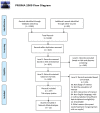A systematic review and network meta-analysis of existing pharmacologic therapies in patients with idiopathic sudden sensorineural hearing loss
- PMID: 31498809
- PMCID: PMC6733451
- DOI: 10.1371/journal.pone.0221713
A systematic review and network meta-analysis of existing pharmacologic therapies in patients with idiopathic sudden sensorineural hearing loss
Abstract
Background: Hearing loss is one of the leading causes of disability worldwide. Patients with hearing loss experience impaired quality of life, as well as emotional and financial consequences that affect both themselves and their families. Idiopathic sudden sensorineural hearing loss (ISSNHL) is a common but difficult to treat condition that has a sudden onset of ≤ 72 hour associated with various etiologies, with the majority of cases being idiopathic. There exists a wide range of therapeutic options, however, the uncertainty surrounding their comparative efficacy and safety makes selection of treatment difficult. This systematic review and network meta-analysis (NMA) assessed the relative effects of competing treatments for management of ISSNHL.
Methods: A protocol for this review was registered with PROSPERO (CRD42017073756). A detailed search of MEDLINE, Embase and the Cochrane Library from inception to February 8th, 2018 was carried out by an experienced information specialist. Grey literature was also searched. Screening full-text records, and risk of bias assessment were carried out independently by two reviewers, and disagreements were resolved through consensus or third party adjudication, while data was collected by one reviewer and verified by a second reviewer. Bayesian network meta-analyses (NMA) were performed to inform comparisons between interventions for a priori specified outcomes that included pure tone average (PTA) improvement and hearing recovery.
Results: The search identified a total of 1,138 citations, of which 613 remained for review after removal of duplicates. Of these, 23 publications describing 19 unique studies (total sample size of 1,527) met our a priori eligibility criteria, that were assessed to be at unclear or high risk of bias on several domains. We identified data on several interventions for ISSNHL therapy and were able to construct treatment networks consisting of six intervention groups that included placebo; intratympanic (IT) steroid; IT plus systemic steroid; per oral (PO) steroid; intravenous (IV) steroid; and IV plus PO steroid for our NMAs. IT plus systemic steroids demonstrated the largest difference in PTA improvement compared to placebo (25.85 dB, 95% CrI 7.18-40.58), followed by IV plus PO steroids (22.06 dB, 95% CrI 1.24-39.17), IT steroids (18.24 dB, 95% CrI 3.00-29.81). We observed that the difference of PTA improvement between each intervention and placebo diminished over time, attributed to spontaneous recovery. The binary outcomes of hearing recovery demonstrated similar relative ordering of interventions but were less sensitive than PTA improvement to capture the significant differences between interventions and placebo.
Conclusion: Unclear to high risk of bias trials rated IT plus systemic steroid treatment as the best among the six interventions compared, and all active treatments were better than placebo in improving PTA. However, it should be noted that certain comparisons were based on indirect evidence only or few studies of small sample size, and analyses were unable to control for steroid type and dosage. Given these limitations, further data originating from methodologically sound and rigorous trials with adequate reporting are needed to confirm our findings.
Conflict of interest statement
BH has previously received honoraria from Cornerstone Research Group for provision of methodologic advice related to the conduct of systematic reviews and meta-analysis. All other authors have no conflicts to declare. This does not alter our adherence to PLOS ONE policies on sharing data and materials.
Figures




References
-
- Mathers C, Stein C, Ma Fat D, Rao C, Inoue M, Tomijima N, et al. Global burden of disease in the year 2000. [Internet]. http://www.who.int/healthinfo/paper50.pdf. 2002.
-
- Canadian Hearing Society. Facts and Figures: Prevalence of hearing loss. [Internet]. https://www.chs.ca/facts-and-figures. 2017.
-
- Harkonen K, Kivekas I, Rautiainen M, Kotti V, Sivonen V, Vasama JP. Single-Sided Deafness: The Effect of Cochlear Implantation on Quality of Life, Quality of Hearing, and Working Performance. ORLJ Otorhinolaryngol Relat Spec. 2015;77(0301–1569 (Linking)):339–45. - PubMed
-
- Hultcrantz E, Nosrati-Zarenoe R. Corticosteroid treatment of idiopathic sudden sensorineural hearing loss: analysis of an RCT and material drawn from the Swedish national database. Eur Arch Oto-Rhino-Laryngol Off J Eur Fed Oto-Rhino-Laryngol Soc EUFOS Affil Ger Soc Oto-Rhino-Laryngol—Head Neck Surg. 2015. November;272(11):3169–75. - PubMed
-
- Anderson JP, Harris JP. Impact of Meniere’s disease on quality of life. Otol Neurotol. 2001. November;22(1531–7129 (Linking)):888–94. - PubMed
Publication types
MeSH terms
Grants and funding
LinkOut - more resources
Full Text Sources
Miscellaneous

